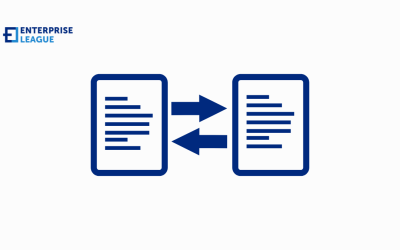Frauds have been around since mankind existed and are constantly evolving and new scheme patterns emerge as circumstances change. With the rise of technology, cybercrime has also increased and with it, the number of fraudulent schemes has increased too. In order to avoid being a victim of online fraud, you need to know how to recognize what is a scam and what’s not.
In this article, we will explain how these schemes work and what are the most common types of fraudulent schemes you may encounter.
How do fraudulent schemes work
The purpose of fraud is always to gain illegal possession of funds. This can happen directly by stealing access to bank cards, electronic wallets, and accounts on cryptocurrency exchanges. Or indirectly: in this case, attackers steal confidential information, photos, etc., and demand money to return data valuable to the victim.
There are many fraudulent schemes, and new ones appear every year. Criminals adapt to the socio-political situation, follow trends and news, and analyze their victims’ weak points and needs. However, the basic fraud schemes remain the same regardless of context.
7 most common types of fraudulent schemes
We will explain some of the most common types of fraudulent schemes.
Phishing
The goal of phishing is to hook the victim. Criminals send emails with various links, and if the user clicks on the said link, a malware download or the next stage of data theft begins. The link may lead to a normal external site, for example, an online store, a movie service, etc., where the recipient of the letter must enter their account details. However, in reality, such a site may turn out to be fake, and the entered confidential data may end up in the hands of fraudsters.
Vishing
Vishing is a scam using phone calls. Criminals call their victims and pretend to be employees of a bank, delivery service, distant relatives, etc., luring the victim and asking them for personal information. Such information may be a bank card or social security number.
Fraudulent technical support
This is such a disservice. Fraudsters contact victims and inform them about a hack on a computer, or bank account while offering to solve the problematic situation as soon as possible. And to solve the problem, of course, you need a password from a PC or an alarm system. One can only imagine what happens next.
Doxing
In this case, fraud is blackmail and extortion. Criminals illegally obtain photos or personal data of the victim and threaten to post this information on the internet. Often people’s photos are edited by graphic editors to make them indecent or shameful.
Spam
Government officials, lawyers, and IT specialists have been fighting spam for many years, but the issue remains unresolved. Some spam emails contain links to malicious software that is automatically installed on the victim’s computer and leads to hacking or stealing confidential information
Fraudulent subscription
These are any malicious actions that require the victim to pay in advance. This can be paid for any goods or services the victim will never receive. This fraud is widespread on resale sites for goods that have already been used.
Online dating fraud
Fraudsters get to know the victims, gain their trust, and then need immediate financial assistance. Feeling close to the fraudster, the victim helps the loved one, who disappears forever from the dating site and the life of the unsuspecting victim.
How to recognize fraudsters
Here are some signs by which you can recognize intruders:
- Unexpected contact: avoid unexpected calls and SMS from unfamiliar numbers, and ignore e-mails from the bank. In any case, it is better to call back on official numbers than to answer suspicious messages.
- Errors in website and e-mail addresses. Such errors are not accidental; it indicates that someone is impersonating the actual addressee.
- Links. Banks do not send messages asking you to follow a link. Such notifications should be ignored or moved to the “Spam” tray.
- Personal data. No one has the right to ask you for confidential information by phone or SMS.
- Quick actions. Scammers do not allow their victims to think and make informed decisions, so everything they talk about usually requires immediate implementation.
- Unprecedented luck. Don’t react to something unlikely to be true. It is impossible to win the jackpot if you have not participated in the lottery.
How to protect yourself from fraudulent schemes
In order to protect yourself from fraudsters, you need to be guided by common sense and be attentive to everything that happens in real life and on the internet. The following tips will help you protect yourself from cybercriminals.
- Install a USA VPN. This will secure your connection and hide sensitive data. In particular, some VPN services offer additional functions, blocking dangerous websites, viral advertising, etc.
- Do not disclose personal information. Never share your confidential data with third parties. Do not share bank card and social security numbers, addresses, zip codes, logins, or passwords.
- Update your browser and anti-virus software on time. Each update offered by the developers fixes bugs in the previous version and code that could allow attackers to gain illegal access to your data.
- Set strong passwords. A strong password contains at least 12 characters and consists of letters of different cases, numbers, and symbols. Do not use combinations containing your name or date of birth.
- Do not transfer money in advance. Use secure payments, or order a product with cash on delivery.
Conclusion
Unfortunately, you cannot completely eliminate the chance of being a victim of online fraudulent schemes but with proper education, you can act to reduce the risk of being scammed. We hope that the information we have presented to you will help you easily recognize online scams and stay safe on the internet.
More must-read stories from Enterprise League:
- The only list of novels for entrepreneurs that you will ever need.
- Foretelling: transform your business by predicting future trends.
- Unique and profitable drone business ideas you should be aware of.
- B2B payment solutions that can help you transform your business.
- Aspects that show the importance of cross-cultural communication in the workplace.
Related Articles
PDFs and the debate between tradition and innovation
Curious about the future of PDF? Learn about its integration with new technologies and explore some practical PDF tips to leverage all the power of this format!
The 10 Ds of entrepreneurship: Why are they important?
Are you familiar with the 10 Ds of entrepreneurship? Let’s see if you possess some or all of them that will launch you for success.
Optimizing performance and reliability in managed file transfer systems
Optimizing the performance and reliability of MFT systems is a continuous process that requires attention to infrastructure, software and strategic processes.
PDFs and the debate between tradition and innovation
Curious about the future of PDF? Learn about its integration with new technologies and explore some practical PDF tips to leverage all the power of this format!
The 10 Ds of entrepreneurship: Why are they important?
Are you familiar with the 10 Ds of entrepreneurship? Let’s see if you possess some or all of them that will launch you for success.






